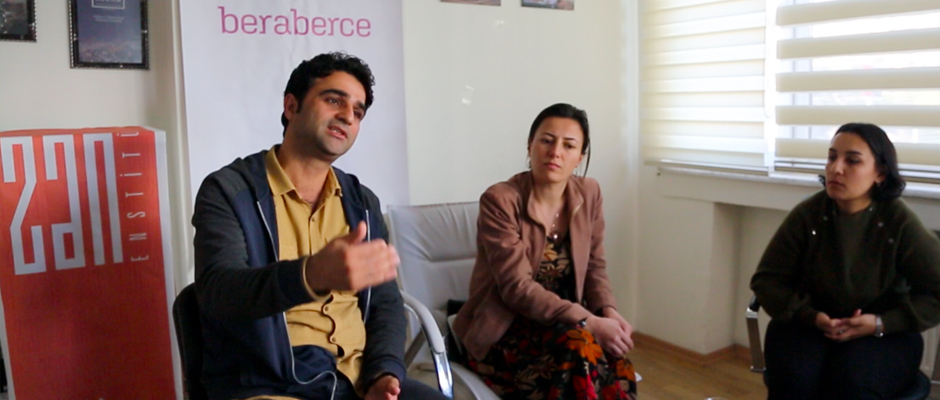From Argentina to Sur: What Do Places of Memory Tell Us?

In an event held by Zan Foundation and Beraberce Association in Diyarbakır, historical importance and functions of places of memory were discussed.
17 April 2018, Reha Ruhavioğlu
Zelal Pelin Doğan, who volunteered for two months in the ESMA: Place of Memory in Argentina, and Talat Çetinkaya from “No to Sur’s Destruction Platform” talked about places of memory in Diyarbakır. Doğan told about her experiences in the ESMA, while Çetinkaya reported their struggle against the destruction in Sur.
Let’s begin with Sur first. What is the latest situation there?
As you know, Sur was made of 15 districts. 8 of them are now destroyed. Almost 40 thousand people had to leave their houses and offices. Almost 4700 structures were destructed. Aside from these statistics, Sur faced a huge social, historical and cultural destruction within 3 years. Once house owners, people now are renters. They were employers, now they are employees or jobless. And they moved to high-rise buildings, a kind of living that they are not used to, they lost their usual neighboring practices.
After the destruction, Sur faces a phase of intense construction. How do you think this will affect the collective memory?
Yes, there are many constructions going on right now. Very fast and intense. Historical protected areas are scooped without any expert opinion. Debris from the historical structures is sold on trucks. This is a cultural destruction itself.
What kinds of studies about places of memory were made in Diyarbakır?
Although not enough, municipalities implemented some projects on places of memory: Some historical places in Sur were restored, historical mansions were converted into museums, some churches were renovated, street names were changed according to their historical backgrounds, street signs were put in different languages, etc. Also, there were some studies to convert Diyarbakır Prison into a museum.
What do you think should be done to make collective memory transfer to the future through places?
We need memory more than anything in these days because the system imposes us to forget. We are talking about a mechanism which tries to destroy everything regarding the collective memory. By destroying our sense of community, that mechanism wants us to consume everything as lifeless beings. That’s why, we need to feed our sense of belonging, I think. Life in Diyarbakır has been flowing continually with its unique diversity for more than 700 years. We have to protect and feed that memory.

Bizi Takip Edin